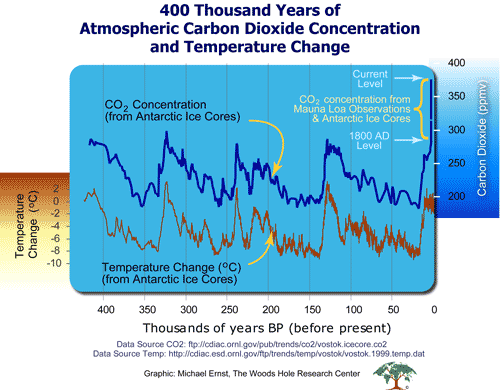In his talk to thousands of scientists this week at the American Geophysical Union, Dr. Richard Alley, perhaps the best communicator of all climatologists today, offered a simple metaphor to explain how changes in levels of carbon dioxide in the atmosphere can lead to a rise in global temperatures, even if the CO2 changes lag a little behind behind changes in global temperature.
It’s important because this fact seems to challenge the cause and effect linkage between CO2 and global temperatures. To explain why this matters, Alley opened his talk by quoting from an angry letter about Alley to the university for which he works, Penn State. The alum said that for his work on global warming, Alley “should be dealt with severely,” and pointed to the lag between changes in the levels of CO2 and changes in global atmosphere as the “shameful” part of Alley’s argument.
Here’s Alley’s counter-example. If he was to overspend on his credit card, his credit card company would delightedly raise the interest rate he is charged on the debt he owes. This would in not too long a time raise the amount of total debt he owes the company. But nonetheless, the overspending would come first, and so one could argue that the raise in the rate of interest lags the change in the level of debt. By this way of thinking, a rise in interest does not lead to a rise in total debt.
But as anyone who has ever dealt with debt knows, the interest rate is in fact “the big control knob” on the amount of debt an individual owes, in another of Alley’s wonderfully simple metaphors.
Similarly, changes in C02 track changes in global temperatures extremely well, but don’t necessarily precede changes in temperature. They lag, slightly, as a rise in interest payments slightly lags overspending. This doesn’t change the fact that interest on debt, more than any other factor, controls the amount of total debt, and CO2, more than any other factor, controls global temps…


